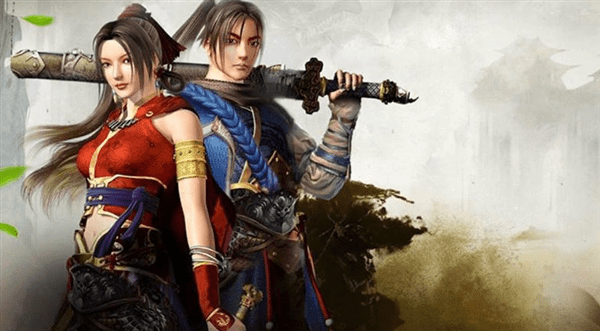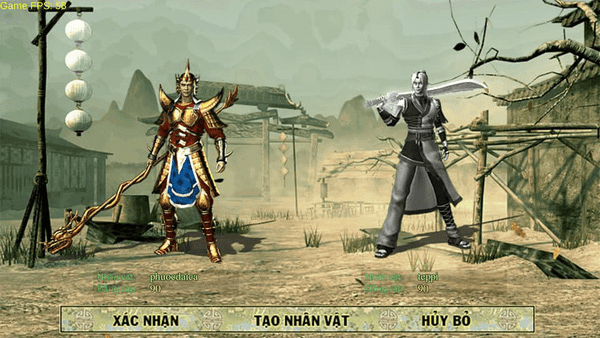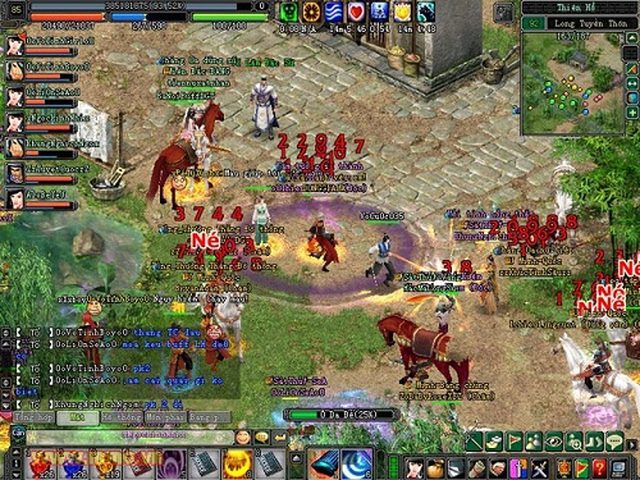The Development Journey of the “Sword of the Legend” Series Over 20 Years: From Classic to Modern
First launched in 2005, Sword of the Legend has traversed a lengthy journey of 20 years, showcasing robust growth through various iterations. Each version has introduced new features, improved gameplay, and enriched experiences for players across generations.

Despite many changes, the core essence of “Sword of the Legend” remains intact. It is a world of martial arts, characterized by engaging combat mechanics and a close-knit community that has consistently contributed to the success of this legendary title over time.
The Glorious Beginnings of the Original Version
The original version can be viewed as the foundation for the development of the entire “Sword of the Legend” series. With a simple 2D graphic background but captivating gameplay, it laid the groundwork for later titles in the martial arts genre such as “Sword of the Legend,” “Thieu Lam,” “Cai Bang,” and “Ngu Doc.” The initial version provided players with a vast and immersive martial arts world that was highly appealing.

Moreover, the gameplay of the original “Sword of the Legend” incorporated various activities such as Guild Wars, PvP battles, and most notably, a robust PK system. Alongside these, the diversity of character classes, unique cultural elements, and engaging quests contributed to a vibrant gaming experience that was unparalleled in the gaming industry at the time.
Over Time, “Sword of the Legend” Became More Refined and Enhanced
Following the immense success of the first version, “Sword of the Legend” continued to upgrade and improve through expanded updates. Version 2, also known as “Sword of the Legend II,” debuted in 2011, followed by “Sword of the Legend 3D” in 2016, bringing significant enhancements in graphics and gameplay. The transition to 3D graphics created a more vivid and realistic world, which helped solidify “Sword of the Legend” as a reputable title. These later versions also introduced new character classes and innovative gameplay features, attracting a large player base and achieving success in retaining core players.

However, not all changes were met with unanimous approval. The shift to 3D graphics and alterations to gameplay mechanics sparked some controversy. A segment of players remained loyal to the original version, preferring traditional gameplay and the familiar 2D graphics. Nevertheless, “Sword of the Legend II” still holds a special place in the hearts of many gamers.
Expanding Beyond PC: The Mobile Version of “Sword of the Legend”
With the advancement of mobile technology, the mobile version of “Sword of the Legend” was released in 2016, opening a new chapter for this game. It not only retained familiar gameplay experiences but also optimized for smaller screens, touch controls, and mobile-friendly features that made the game successful. The mobile version’s graphics were impressive and comparable to the original, making it a worthy continuation of the legacy.

This version maintained traditional elements such as character classes, PK, and Guild Wars, while also adding new features like more expansive maps, transaction systems, and online battles optimized for mobile. By expanding into the mobile platform, “Sword of the Legend” showcased its adaptability and ability to evolve with technological developments. Subsequently, “Sword of the Legend 1 Mobile” was released in 2021, continuing to uphold the brand’s legendary presence.
After 20 years, “Sword of the Legend” has developed into a monumental presence in the gaming community in Vietnam. The game has not only evolved in terms of technical upgrades but has also become a cultural icon, connecting players and creating unforgettable memories. Regardless of how many new titles emerge, “Sword of the Legend” remains an essential part of gamers’ lives and stands as a testament to the enduring legacy and remarkable development of a game over two decades.





















